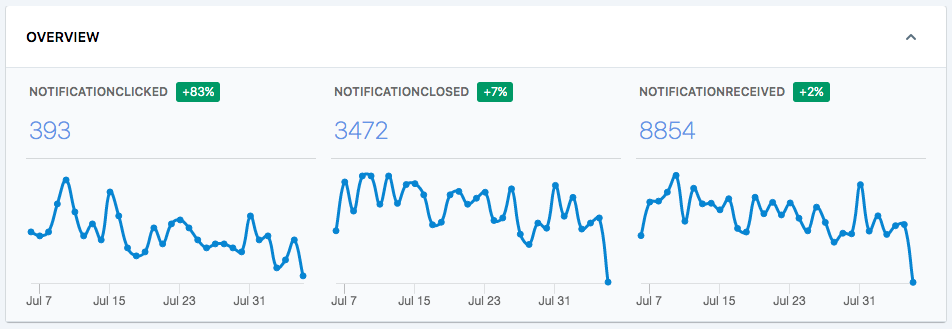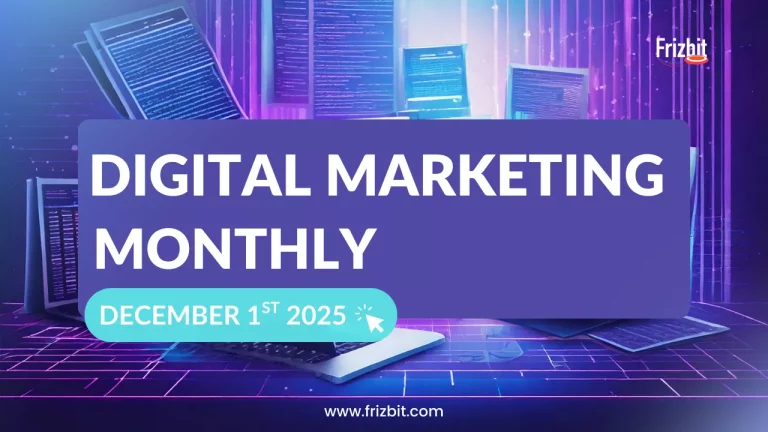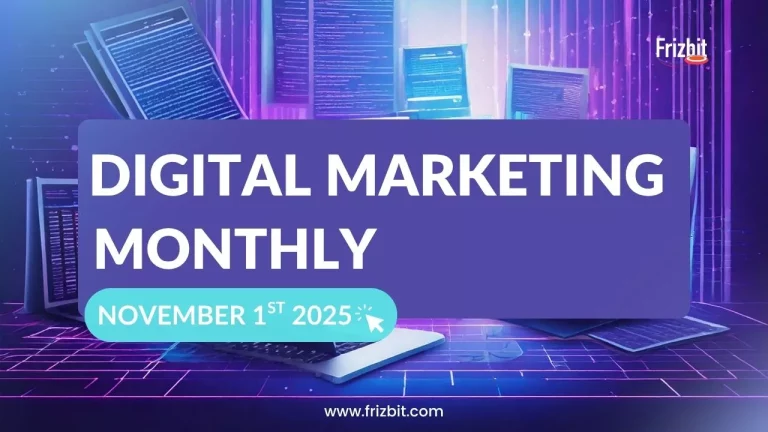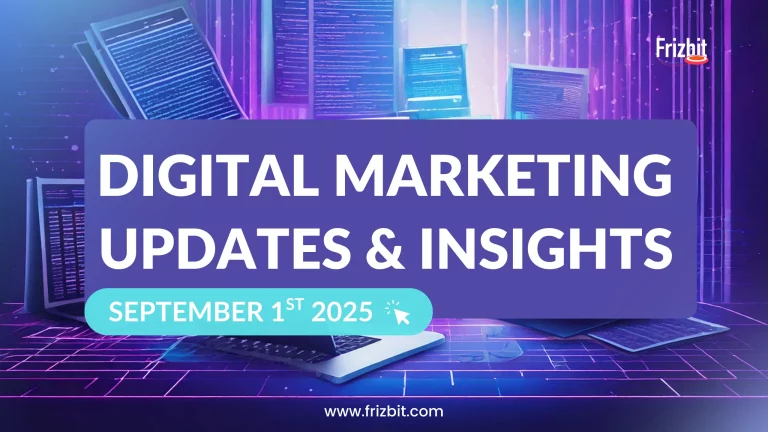Defining objectives and KPI’s is essential for all digital marketing efforts, including web push notifications. How else are you going to measure the performance of your campaigns and make sure they are working towards the achievement of your marketing goals?
Tracking certain metrics to subsequently analyse them, will give you insights on what’s working best with your target audience and to what are they being more responsive. You can later use this data to adjust your web push notifications campaigns and make them the best possible.
That is why in this blog post we are going to share with you the most important metrics you should be tracking and how to understand your web push notifications campaigns performance.
Web push notifications are still a fairly new digital marketing channel, which is why it is normal to have questions and doubts about their performance and how to track and measure results. We have summed up the most important metrics for you:
Web push notifications metrics you should be tracking:
1. Opt-in Rate
The opt-in rate makes reference to the number of people who visit the site and click on “Allow” when asked if they want to subscribe to web push notifications. In fewer words, is the number of people who subscribe, versus the total number of people who visit your website. In comparison, web push notifications have a 5 to 10% opt-in rate, while emails have a 1 to 3%.

The opt-in prompt is the first contact visitors have with this channel and how and where you place it can make a huge difference. There are two types of opt-in request you can use:
- Native opt-in: this is the browser’s default version of the prompt. It is standard for every website showing a short text asking visitors if they want to allow or block notifications from the site and it is a single-step request.
- Custom opt-in: in this version, website owners have the option to completely customize the prompt. You can add your logo and write any text you want to ask users to allow notifications. However, if visitors click on “Allow” the native opt-in will be automatically triggered and for the subscription to be effective, they need to click on “allow” again. This type of prompt requires visitors to make two clicks to subscribe and this tends to decrease opt-in rate by 3x.
You can also choose which page from your site you want the opt-in prompt to show. The most common practice (and the one we recommend from Frizbit) is to place it in the homepage and show it to visitors as soon as they enter the site for the first time. If they click allow, they will become subscribers, if they click on block you can’t ask them again unless they delete all the browser data, and if they just close it, the prompt will appear again when they come back or visit another page.
2. Click-through Rate
Click through rate might be the most talked about metric in digital marketing. CTR is the number of clicks a web push notification campaign received, versus the number of total subscribers it was sent to.
The reason this metric is so popular (and so important) is because it easily lets you know what type of message and notifications your subscribers are responding better to. If you run different campaigns for different events in your site, by analyzing their CTRs you can create hypotheses, test them and improve the performance of your notifications.
If, additionally, you decide to run A/B tests, try out variations of the same message and track the CTRs of each one, you can have even deeper insights on the type of message that works best for your business goals.
There are many factors that can directly affect the click through rate:
- Image: web push notifications that include an image have a 20% higher click through rate than the ones without one. So make sure every time you can, you add an image.
- Required interaction: web push notifications are displayed on the user’s screen only for a few seconds unless you activate the “require interaction” feature that forces the user to click or close the notification. If this box is not checked, you run the risk of the user missing the notification for any reason, thus decreasing the click through rate.
- Call to action: we can’t stress enough the importance of including a clear call to action in your notification and how much this can affect CTRs. Call to actions need to tell users what you expect them to do and is much better if you appeal to a certain sense of urgency.
- Segmentation: relevancy is a very important factor when it comes to CTRs in web push notifications. That is why, especially with bulk or manual campaigns, the most segmented your audience is, the better. Automated web push notifications usually have very good click through rates because they are highly personalized with messages that click with the recipient.
3. Conversion Rate
Conversion rate is the metric that indicates if you are reaching your business goals. They vary from industry and objectives, going from filled forms, completed purchases, demo requests or sign ups.
When it comes to web push notifications and conversion rates, this stat can help you determine if there’s some sort of issue with you landing page or check out process once the users go back to your site after clicking the notification.
Good CTRs are not a goal, reaching your desired conversion rate is. That is why you should always contrast the information you receive from both metrics so you can analyse it and dig in deeper if you are not getting the results you want.
4. Time Spent on a Page
At first glance it might seem that this is not a metric directly related to your web push notifications. However, it is and it can provide you with significant insights about the relevancy of the messages you are sending.
Every notification you send includes a link that redirects the user to a page on your site. It is your job to make sure that the copy from the notification matches what the user finds when he clicks on it and goes to the landing page. If it doesn’t, the time spent on the page will be very short because the user will leave disappointed and confused.
This metric indicates the accuracy of the message and if it met the expectations you created for the user. For example, if the notification you sent makes reference to a 25% discount and when the user clicks on it, arrives to a regular category landing page with no discounted products, the user will be lost and leave without spending any time on your site.
Understanding the metrics
Metrics, numbers and analysis might seem very boring and tedious. However, understanding these key metrics is the secret to conduct successful campaigns and reach your business goals. Yes, it takes time to sit down and interpret all the data to then create hypotheses, apply them and analyse again but it is the only way to eliminate the guesswork and and strategize with a plan and clear objectives.

With web push notifications, you can combine Google Analytics with Frizbit’s campaign analytics and the detailed reporting we personalise for each of our clients. By comparing and contrasting all this information, you have everything you need to optimize your web push notifications campaigns.
Make sure you also read:



